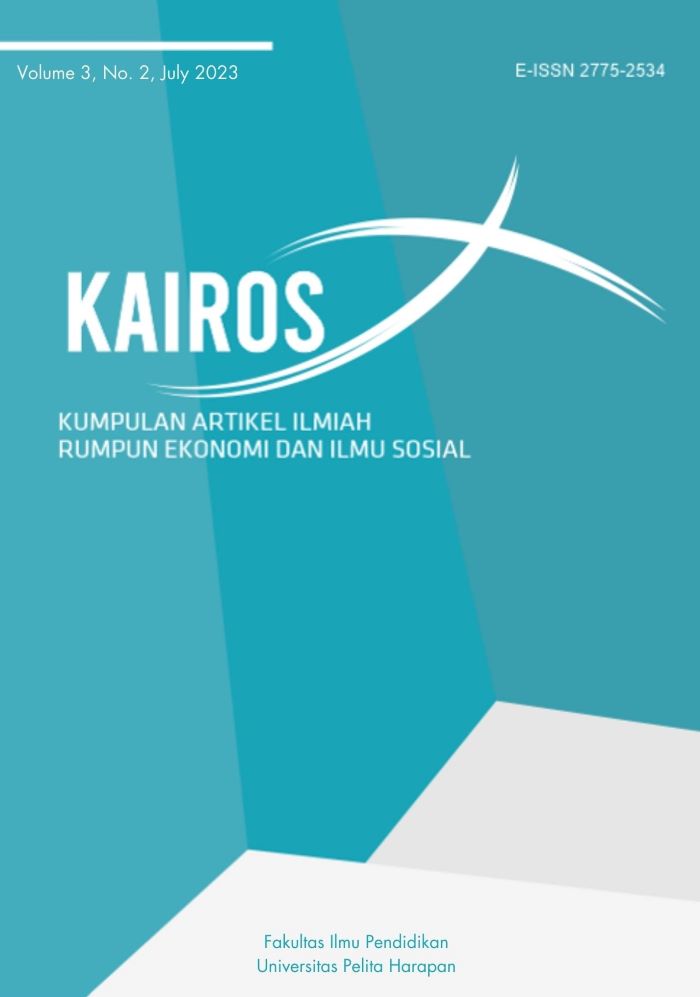TEACH HISTORY WITH FILM: A LITERATURE REVIEW AND A HISTORICAL FILM ANALYSIS
DOI:
https://doi.org/10.19166/kairos.v3i2.7357Kata Kunci:
teaching history, film, benefits, best practiceAbstrak
Teaching students about historical events and being critical about them is still a challenging task for some teachers. Teaching history with films offer a different challenge for teachers and students to learn history, however if films are used merely as entertainment in a history classroom, it will lead to uncritical and inaccurate view of the past and reinforce students’ historical misconceptions. Therefore, the purpose of this study is to review the benefits and best practice of teaching with historical film. This study provides a historical film analysis Mongol as reference for teacher’s best practice of teaching history with film.
Referensi
Bodrov, S., Melnik, A., & Selyanov, S. (Producers), & Bodrov, S. (Director). (2008). Mongol: The Rise of Genghis Khan [Film]. United States: Picturehouse.
Center for Media Literacy. (2009b). 10 Benefits of Media Literacy Education. Retrieved February 15, 2009, from https://www.medialit.org/reading-room/10-benefits-media-literacy-education
Deshpande, Anirudh. (2004). Films as Historical Sources or Alternative History. Economic and Political Weekly, 39(40), 4455-4459. Retrieved from https://www.jstor.org/stable/4415618
Marcus, A. S., Metzger, S. A., Paxton, R. J., & Stoddard, J. D. (2010). Teaching History with Film: Strategies for Secondary Social Studies. New York: Routledge. https://doi.org/10.4324/9780203862995
Martin, D. (2018). Teaching, Learning, and Understanding of Public History in Schools as Challenge for Students and Teachers. In M. Demantowsky (Ed.), Public History and School: International Perspectives (1st ed., pp. 84-94). De Gruyter. https://doi.org/10.1515/9783110466133-005
Massachusetts Department of Elementary and Secondary Education. (2018). 2018 History and Social Science Framework Grades Pre-Kindergarten to 12. Malden, MA: Massachusetts DESE.
Masson, E. (2012). Film for Education: Debates, Idea(l)s and Practices. In Watch and Learn: Rhetorical Devices in Classroom Films after 1940 (pp. 27-98). Amsterdam: Amsterdam University Press. https://doi.org/10.1017/9789048514113.002
Nassaji, H. (2015). Qualitative and descriptive research: Data type versus data analysis. Language Teaching Research, 19(2), 129-132. https://doi.org/10.1177/1362168815572747
National Council for the Social Studies (NCSS). (2013). The College, Career, and Civic Life (C3) Framework for Social Studies State Standards: Guidance for Enhancing the Rigor of K-12 Civics, Economics, Geography, and History. Silver Spring, MD: NCSS
Russell, W. (2004). Virtual ideology: Using online political party quizzes, to help students develop a personal political ideology. Learning and Leading with Technology, 32(3), 18-21. Retrieved from https://eric.ed.gov/?id=EJ695900
Russell, W. B. (2009). Teaching social issues with film. Charlotte, NC : IAP. Retrieved from https://archive.org/details/teachingsocialis0000russ
Woelders, A. (2007). Using Film to Conduct Historical Inquiry with Middle School Students. The History Teacher, 40(3), 363-395. Retrieved from http://www.jstor.org/stable/30036830
Unduhan
Diterbitkan
Cara Mengutip
Terbitan
Bagian
Lisensi
Authors who publish with this journal agree to the following terms:
1) Authors retain copyright and grant the journal right of first publication with the work simultaneously licensed under a Creative Commons Attribution License (CC-BY-SA 4.0) that allows others to share the work with an acknowledgement of the work's authorship and initial publication in this journal.
2) Authors are able to enter into separate, additional contractual arrangements for the non-exclusive distribution of the journal's published version of the work (e.g., post it to an institutional repository or publish it in a book), with an acknowledgement of its initial publication in this journal.
3) Authors are permitted and encouraged to post their work online (e.g., in institutional repositories or on their website). The final published PDF should be used and bibliographic details that credit the publication in this journal should be included.




